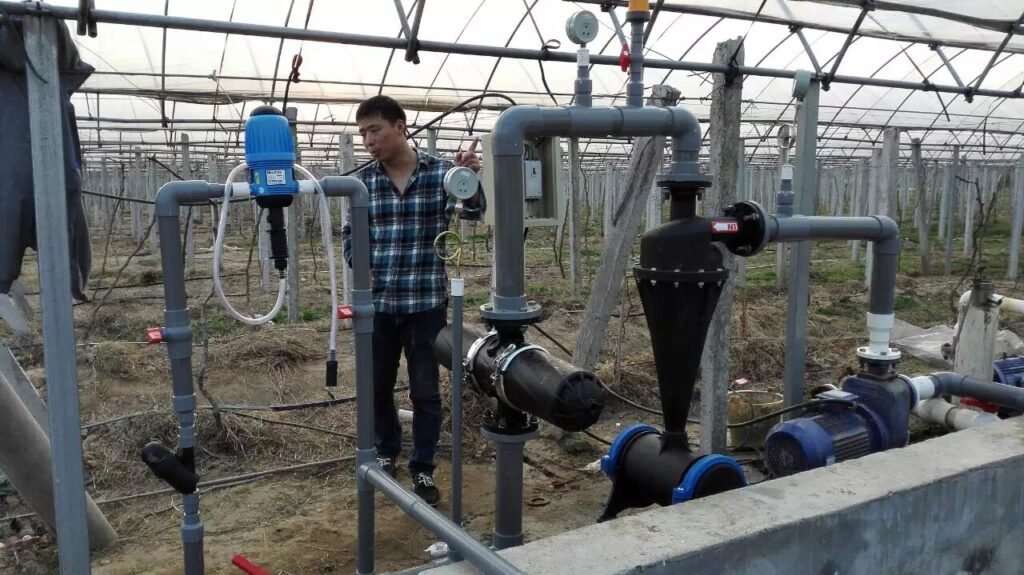In the world of agriculture and irrigation, efficiency and water conservation are paramount. Drip irrigation systems have gained popularity due to their ability to deliver water directly to the plant’s root zone, minimizing water waste and maximizing crop yield. One crucial component of a drip irrigation system is the Venturi injector. This article aims to provide a comprehensive guide on how Venturi works in drip irrigation, shedding light on its functionality, benefits, and practical implementation.
Understanding the Basics: What is Venturi?
Before delving into the inner workings of Venturi in drip irrigation, let’s start by understanding what a Venturi is. In simple terms, a Venturi is a constricted tube that causes fluid to speed up as it passes through. This phenomenon is based on the principle of fluid dynamics and is utilized in various applications, including drip irrigation systems.
The Role of Venturi in Drip Irrigation
The primary purpose of a Venturi injector in drip irrigation is to introduce fertilizers, pesticides, or other chemicals into the irrigation water. It achieves this by creating a vacuum that draws these substances into the water stream, effectively mixing them before delivering the solution to the plant’s roots. This controlled mixing process ensures precise nutrient application and eliminates the need for separate fertilizer application methods.
How Does Venturi Work?
A Venturi injector consists of three main components: the constriction, suction port, and mixing chamber. The constriction is the narrowest part of the injector, which causes the water to accelerate as it passes through. The suction port, connected to the chemical supply, allows the Venturi to draw the desired substance into the water stream. Lastly, the mixing chamber facilitates the blending of the chemical with the water, ensuring a homogeneous mixture.
As water flows through the constriction, its velocity increases, creating a pressure difference between the constriction and the mixing chamber. This pressure difference generates a vacuum at the suction port, causing the chemical to be pulled into the water flow. The high-velocity water then enters the mixing chamber, where thorough mixing occurs. The blended solution is then transported to the irrigation system, ensuring an even distribution of the desired substances to the plants’ roots.
Benefits of Venturi in Drip Irrigation
- Accurate Nutrient Application: Venturi injectors offer precise control over the concentration and ratio of nutrients or chemicals applied to the crops. This accuracy prevents over or under-application, optimizing plant growth and minimizing resource waste.
- Uniform Distribution: The efficient mixing process facilitated by Venturi injectors ensures uniform distribution of nutrients or chemicals throughout the irrigation system. This uniformity promotes consistent plant growth and reduces the risk of crop variability.
- Increased Efficiency: By integrating the Venturi injector directly into the irrigation system, the need for separate application methods is eliminated. This results in time and labor savings, increasing overall system efficiency.
- Versatility: Venturi injectors can accommodate a wide range of chemicals, fertilizers, or additives, making them highly versatile in addressing various crop needs. This flexibility allows farmers to tailor their irrigation solutions to specific plant requirements.
Practical Implementation of Venturi in Drip Irrigation
Integrating a Venturi injector into a drip irrigation system requires careful consideration and proper installation. Here are some key steps to ensure the effective implementation of Venturi:
- Selection of Appropriate Venturi Injector: Different Venturi injectors are available in the market, varying in flow rate, size, and application. Choosing the right injector that suits your specific irrigation needs is crucial for optimal performance.
- Proper Placement: Installing the Venturi injector at a suitable location within the irrigation system is vital. It is typically recommended to place the injector downstream from the filtration system and before the pressure regulator for optimal performance.
- Maintenance and Cleaning: Regular maintenance and cleaning of the Venturi injector are essential to prevent clogging and maintain its efficiency. Flushing the injector with clean water after each use and periodically disassembling and cleaning the parts ensure uninterrupted operation.
Conclusion
In conclusion, understanding how Venturi works in drip irrigation is crucial for harnessing the full potential of this technology. The Venturi injector plays a vital role in accurately delivering nutrients, fertilizers, or chemicals to the plant’s root zone, ensuring optimal growth and yield. By leveraging the benefits of Venturi in drip irrigation, farmers can enhance water efficiency, reduce resource waste, and achieve sustainable agricultural practices.


